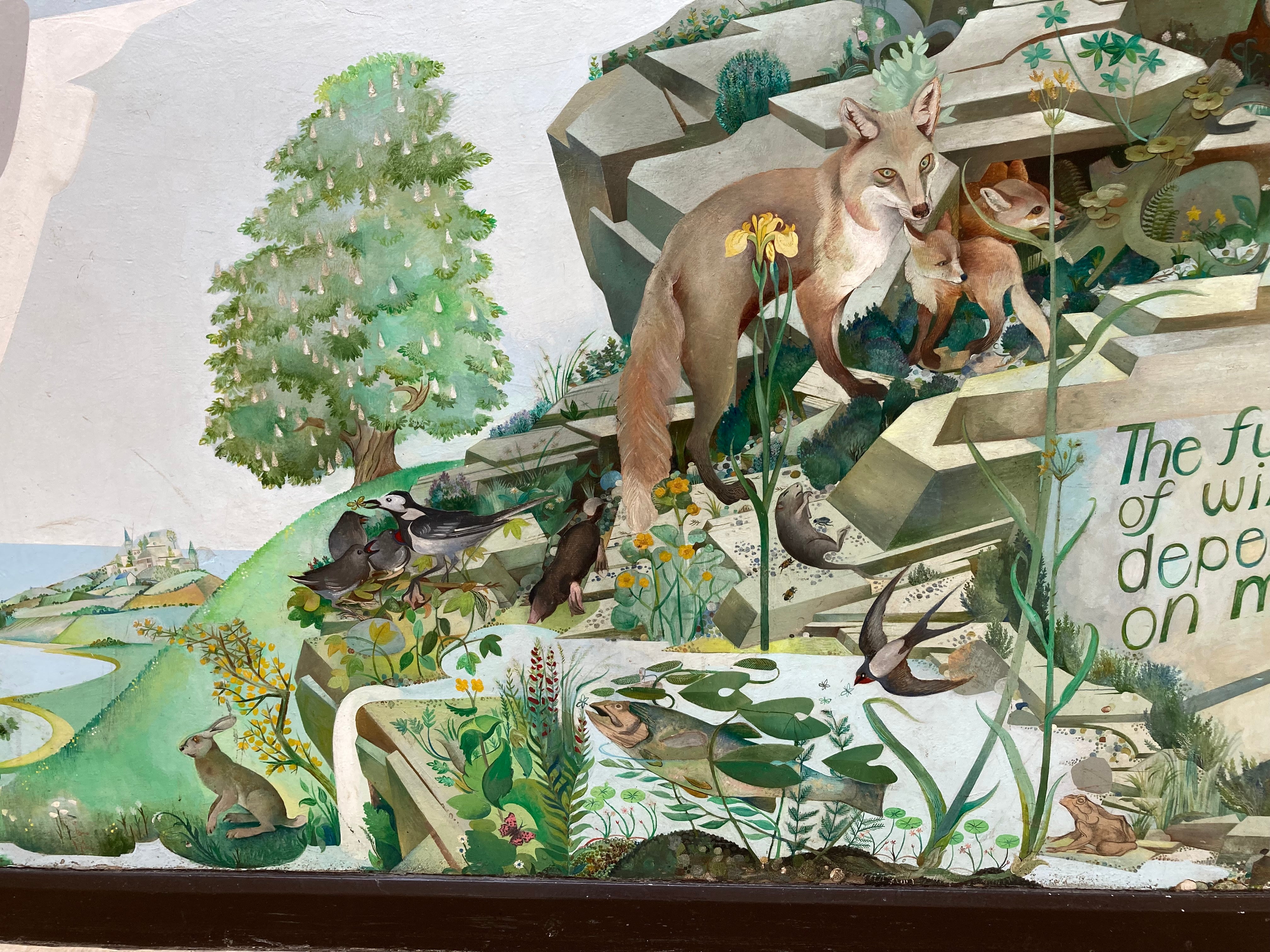Alasdair Gray mural could get listed status
The work by the celebrated artist is in a visitor centre in North Lanarkshire.

Your support helps us to tell the story
From reproductive rights to climate change to Big Tech, The Independent is on the ground when the story is developing. Whether it's investigating the financials of Elon Musk's pro-Trump PAC or producing our latest documentary, 'The A Word', which shines a light on the American women fighting for reproductive rights, we know how important it is to parse out the facts from the messaging.
At such a critical moment in US history, we need reporters on the ground. Your donation allows us to keep sending journalists to speak to both sides of the story.
The Independent is trusted by Americans across the entire political spectrum. And unlike many other quality news outlets, we choose not to lock Americans out of our reporting and analysis with paywalls. We believe quality journalism should be available to everyone, paid for by those who can afford it.
Your support makes all the difference.A mural by one of Scotland’s most celebrated writers and artists could soon be recognised with listed status.
Alasdair Gray, author of Lanark, painted the Scottish Wildlife Mural at the Palacerigg Visitor Centre in Cumbernauld in 1974.
Historic Environment Scotland (HES), the leading public body for protecting the country’s history and heritage, is seeking views from the public on proposals to list the centre at Category B because of Gray’s 20th century artwork at the entrance foyer.
Category B is given to buildings of special architectural or historic interest that are major examples of a particular period, style or building type.
In its depiction of Scottish wildlife in an idealised countryside scene, alongside industrial landscapes, the mural explores natural and human ecology, and humankind’s place in the universe – themes Gray revisited throughout his artistic and literary work.
The mural features many of his commonly used motifs, including the Tree of Life and the embracing figures of Adam and Eve in the lower left of the scene.
It was commissioned by naturalist, writer and journalist David Stephen, who was closely involved in the planning of the visitor centre and its emphasis on wildlife conservation and education.
Gray, who died in December 2019, lived on site with Mr Stephen and his family while painting the mural, which is among the artist’s earliest surviving public works.
It had to be restored in 2001 by the artist and his assistant Robert Salmon after it suffered water damage.
Although most famous for his writing, Gray began as a visual artist and studied design and mural painting at Glasgow School of Art from 1952 to 1957.
After graduation, he was commissioned to paint murals in and around Glasgow while making a living as an artist, teacher and writer.
As the mural is embedded in the fabric of the visitor centre, the proposed listing would cover the building to protect the cultural significance of the mural.
Dara Parsons of HES said: “Alasdair Gray is one of Scotland’s most important cultural figures of the 20th century, and his mural at Palacerigg is significant both as a major example of a later 20th century public mural, and an important surviving example of his visual art which contains many of the themes and motifs he explored throughout his work.
“Listing is a way of recognising and celebrating what makes our built heritage special and ensuring this is taken into account in future decisions.
“We’re keen that people have an opportunity to have their say as part of this process, so we encourage anyone with an interest in the mural to take part in our consultation.”
The public consultation will run until June 28 and can be accessed on the HES website.
Members of the public are encouraged to send in their views and comments by emailing designations@hes.scot or contacting HES through the Heritage Portal.